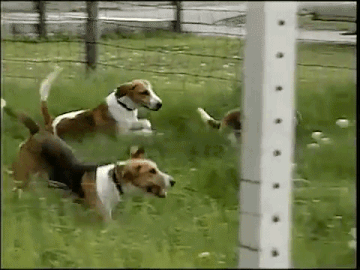
Pity the lot of the dog breed historian. But first, scroll down for a prologue:
As of January 2024, the American Kennel Club registers 201 breeds, all with unique histories – but the historical narratives of too many of them have been lost because of war, revolutions, poor record keeping, or simply the vastness of time. Still, hope springs eternal (especially in the heart of a cynologist) that in some dusty attic, or in the basement of an old estate, records will be found that give us clues about the origins of our respective breeds. Especially with some breeds, further insight into the DNA that went into their genetic ancestry would be like finding a pot of gold.
For some breeds, this will never happen.
Why?
Because many ancestral breeds are long gone, as in extinct.
Among pointing dogs, several breeds have vanished, such as the Boulet Griffon, Dupuy, Mirrepoix, and Larzac in France, the Württemberger in Germany, and the Llanidloes setter in the United Kingdom. And then there are the English White Terrier, the Talbot, the Salish Wool Dog (aka Woolly Dogs), the Moscow Water Dog, Kuri Dog, Molossus Dog, Hawaiian Poi Dog, North Country Beagle (aka Northern Hound), St. John’s Water Dog, and the Argentine Polar Dog.
Certainly a significant cause was the loss of a breed’s original purpose. Changes in breeding practices also factored in when hunters or farmers “tweaked” their dogs with crosses to other breeds from other countries to improve performance. And finally, we live much differently than our ancestors did. More of us live in cities, on less land, or earn our living in ways that don’t rely on the help of a dog.
Additionally, it would also be a mistake to assume that only ancient breeds such as the Bloodhound (descendant of the Talbot Hound) have extinct ancestors. As breeds go, the wonderful Yorkshire Terrier isn’t really ancient, dating back as it does to the relatively recent 19th century in Yorkshire, England. And yet many of the breeds that went into the final version of the Yorkshire Terrier are now extinct: The Clydesdale Terrier, the Paisley Terrier, the Waterside terrier (or Otter terrier) and the Old English terrier (toy rough and broken haired) – all gone forever. These breeds eventually merged, or their type gave way to another version, but ultimately, they live on in a small, agile, and fearless dog that could effectively catch rats in clothing mills and mines.

Harriers
The breed could have been named after any of the aforementioned ancestors, but when dogs of the breed started participating in dog shows in England in 1861, they were known then as Broken Haired Scotch Terriers and then, according to one source, as the Toy Terrier. Due to its popularity in Yorkshire and beyond, the breed’s name was changed to Yorkshire Terrier in 1874.
We conclude with a cautionary warning. Extinction is a present danger for many beloved breeds, some in their country of origin. In 2020, twelve Harriers were registered with the UK’s Kennel Club. In what had to be a joyous celebration, that number climbed to thirty-eight a year later, but then dipped precipitously to nine in 2022. And worse? Last year in 2023, there were NO registrations at all. It might shock you to see the breeds considered vulnerable in the UK, with others “at watch,” statistics you can read for yourself here.
When we lose these breeds, we lose the legacy of the culture and people who created them for a reason.
